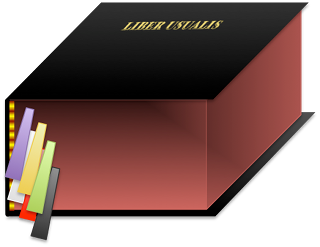The Story of My First (and Second) Telescope
I have been interested in physical sciences since I was young. I wanted to know about atoms, molecules, energy, weather, stars, planets, nebulae, galaxies, propulsion, history, archaeology, and just about anything having an unsolved mystery. Strangely, I was never much interested in biology. Don’t really know why. You might have thought I would end up in a scientific profession. In the end, I wound up in the problem-solving field of computer science and information systems.
My First Telescope
Along the way, I latched onto amateur astronomy–for a time. In high school, I really wanted a telescope. My parents graciously indulged my interest, and I wound up with a 10″ Meade Starfinder Equatorial. They would have gotten me the 8″, except I pitched in some of my own money to satisfy my aperture fever.
I had unrealistic expectations. First, the shipping time. It took months for the scope to arrive. I guess it had to be manufactured, and none were in stock. I waited impatiently wondering if that UPS or FedEx truck driving by was the one with my telescope. It seemed it would never come. Eventually, it did come.
Next, there was some issue with assembly. I got it put together, but I could never get it to focus. No matter what I looked at, all I could see was what appeared to be the shadow of the secondary mirror vane filling the eyepiece. I would travel the focuser from one extreme to the other, with little change. After calling up the company that sold us the scope, we determined the focuser wasn’t traveling far enough. The rack of the rack and pinion was getting caught on the cardboard “sonatube”. Since I never tried to force it beyond that point, I had never gotten it to focus. Some fiddling (and if I recall correctly, some filing of the tube) and the focuser could finally travel the full distance. I could finally see something!
Well, that was Cumbersome
That brings us to the next unrealistic expectation: how often I would use it. The scope was big, and I felt self-conscious or embarrassed with it set up in the front yard when people drove by. Further, it took a fair amount of effort to get the tube on the stand, balance it, polar-align it (not sure I’ve ever done that very well) and brave the cold or the mosquitos. And it was sometimes a pretty lonely experience. I really wanted to see those faint fuzzies, but I only found a few objects. I was proud, at least, that I had found M57 (the Ring Nebula) and I could actually see the ring structure, and I was able to get averted vision working for me. The mount had tracking but no go-to, so I had to find things myself.
Setting up the scope took several trips to the garage. First get the mount, then get the 25 lb. counterweight and put it on where I had marked the rod with tape. Then get the tube (I’m sorry, the “optical tube assembly”) and try to set it on the mount and strap it down without dropping it. This was harder than it seemed, and there were a few times where the tube slipped or the declination knob wasn’t locked. Fiddling with the straps was painful, as they would bounce around while putting them over the tube and sometimes slip off after I had thought they were properly screwed on. It was cumbersome to say the least. Finally, one last trip to the garage for a folding table on which to set the eyepieces and my copy of Star-Hopping for Backyard Astronomers by Alan MacRobert.
Some Success and Some Failure
I enjoyed at least a dozen front yard outings with the scope, but eventually, other forces prevailed. I used it less and less. Among other things, it was difficult getting anything centered in the eyepiece with that mount because there was so much backlash (I would have to overcompensate because the mount would always come back a little bit after pushing it, particularly in right ascension).
During my outings, I did see Jupiter (and some of its moons as dots), Saturn with its rings, Venus in different phases, the Orion Nebula with perhaps a greenish hue, and lots of stars. And the Moon of course…had to use a moon filter because it was so bright. But overall, I didn’t know the sky too well, the skies weren’t particularly dark, and I didn’t see as much as I expected to. On the other hand, in some ways, I saw more than I expected to see. It’s hard to describe the relief and contrast of craters on the moon at the terminator line through a 10″ scope. Awe-inspiring. And I was truly surprised the first time I saw M57, looking like a small gray smoke-ring.
In college, I was mostly busy with school, but I took some physics courses and joined the Society of Physics Students. Mars was making a close approach to earth, so details of the planet were easier to see. I pulled out the old Starfinder, and we had a good turnout and good views of Mars.
My Second Telescope
After graduating, two interesting things happened. First, I suddenly had some money saved up because I was now working in my career. Second, I had very little free time. I was also now living in the big city, so stargazing was not easily accommodated. Nevertheless, I wanted to revive my astronomical hobby. The Atlas EQ-G mount had recently come out, and I decided a new mount might breath new life into astronomy for me. I had to buy mounting rings custom for my scope since the Atlas accepts a dovetail plate. Oh yes, and I finally replaced the focuser with a decent JMI model.
When I finally got around to using the new mount, I couldn’t believe the difference. I marveled at all the time I had wasted fighting with the backlash on the original mount. All that time, I was thinking I must be doing something wrong. Now I was rediscovering my telescope on a real mount. I could actually slew as little or as much as I wanted at the push of a button, and the scope stayed where I pointed it. Imagine that! I actually threw the old mount away, bouncing metal straps and all. I now had my second telescope–even though it was the original optical tube.
And that is the story of how I got my first telescope and my second telescope.




